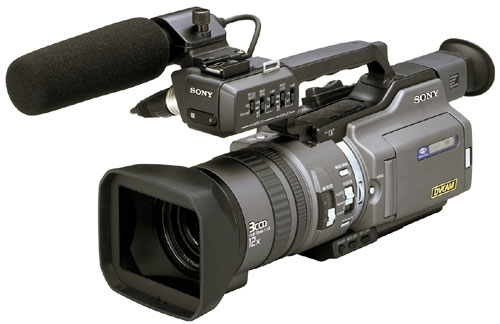
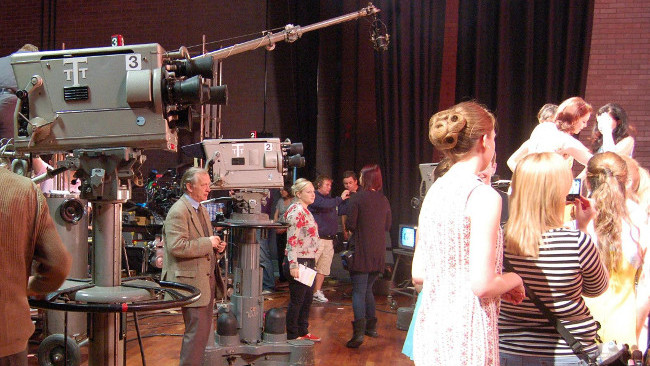 Marconi TV Camera
Marconi TV Camera
We recently wrote about how you would design a camera of the future starting with a completely blank piece of paper. But how did cameras evolve their current form factor and how does antiquated technology still determine their shape today?
Today, a digital video camera is basically a lens with a sensor behind it. Somewhere, there needs to be space for a viewfinder and/or monitor, a slot for a memory card and a bunch of electronics. There's no film that has to pass in front of the lens, no space needed for cassettes of tape. These elements could be put together in a multitude of ways, so why do cameras look so similar, with some of the basic forms dating back three or four decades?
Ideally, form follows function, but sometimes function follows form and that form has developed through a combination of market pressures, professional standards, conservatism and unchallenged history. Think of the QWERTY keyboard, developed to help telegraph operators transcribing Morse code (but, contrary to popular myth, not to slow typists down to prevent the keys from jamming). It is far from an ideal layout for modern use, but, since everyone is so used to QWERTY, it would be very hard to change. Perhaps camera design can be a little like that. We don't trust designs that are too unfamiliar as they put us at risk, but maybe it is time to question what we take for granted.
So where do we begin? We could start our history study with the advent of sound film around 1930.
The Studio Camera
When sound came in 1927, 35mm movie cameras got big; the camera basically had to be put into a sound-proof booth. The original 3-strip Technicolor camera in its blimp weighed a quarter of a ton. Studios developed machinery for handling very large, heavy cameras and some of that machinery is still around today. No one considered putting a camera on his-or-her shoulder. The first location film sound recording units were things you drove around in, rather than hung off your shoulder.
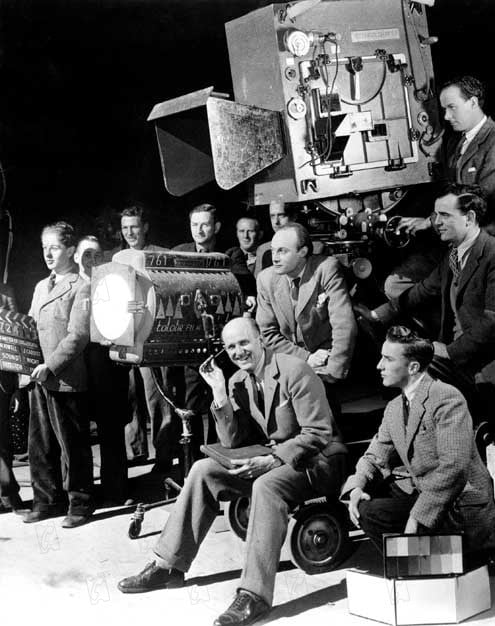 Early Technicolor Camera
Early Technicolor Camera
When TV came in after World War II, television cameras were also extremely large and cumbersome. TV studios built smooth level floors so multiple cameras could be pushed around on pedestals.
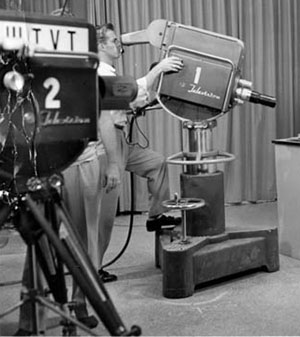 Early TV camera on a pedestal
Early TV camera on a pedestal
The technology continued to develop on different paths. TV cameras were designed to be operated by a single person, film cameras by two or more. Since TV cameras remained on pedestals, there was little incentive to make them portable and semi-permanent large zoom lenses, rather than a film camera's interchangeable lenses, became the norm.
You are no more likely to see a pedestal in a film studio today than you are to see a focus puller in a TV studio, even though the fundamentals of the cameras themselves might be very much the same. The differences between film and TV technology remain with us, partly because of differences in working practices, but partly, perhaps, because the technology itself imposes a way of working.
The Shoulder Mounted Camera
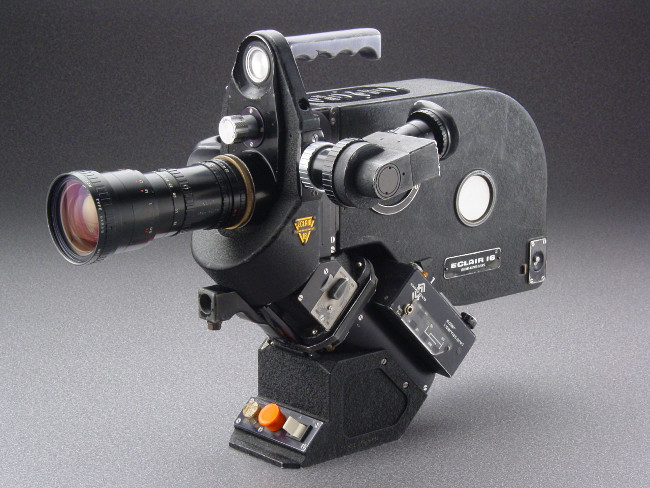 Eclair NPR
Eclair NPR
It wasn't until the 1960s that it became feasible to have cameras that were quiet enough to be used for sync sound and light enough to be used without a tripod. Two 16mm cameras dominated the 1960s: the German Arri 16BL and the French Eclair NPR.
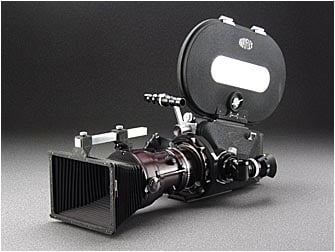 Arri 16BL
Arri 16BL
The robust Arri 16BL was perhaps the most successful 16mm camera of this period, 'BL' standing for 'blimped', meaning it was a noisy camera contained in an integral sound-proof housing (the lens itself was blimped too). This camera was not really designed to be hand-held, even though it often was; if put on the shoulder, the viewfinder of the original BL would meet the cameraperson's face somewhere around their chin. Arri soon modified this with an extension that raised the viewfinder to eye level, but this was still a camera most at home on a tripod. It also assumed, like most of the shoulder-mounted cameras that followed, that the camera operator was right-handed and thus right-eyed.
The first sync sound camera designed to sit on the shoulder was the Eclair NPR ('Noiseless Portable Reflex'). The NPR was the premier documentary camera until Arriflex introduced the Arri 16SR in the early 70s. The SR was a shoulder-mount camera, but still had a flat base (and few camera operators, even in Germany, had square shoulders). The SR did, however, have a swing-over viewfinder, so it could be used by left-handed operators as well.
This was an era when, since image quality was largely dependent on filmstock and lenses, camera manufacturers could concentrate on the ergonomics, competing to make their cameras lighter, quieter and better balanced. The shoulder-mount 16mm camera came to its peak in the Aaton of the mid-1970s, another French camera which shared its roots with the Eclair. The Aaton also had a swing-over viewfinder for left-handers, but Arri sued for patent violation and won the case, causing heavy penalties from which Aaton never recovered.
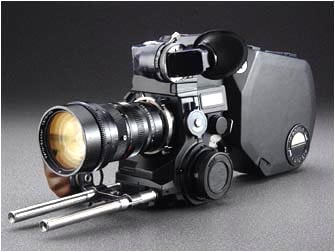 Aaton XTR
Aaton XTR
That shoulder-mount design became the model for professional portable video cameras and remains so to this day, even though the technology itself has changed enormously. The first portable video cameras, referred to as PSC (portable single camera) or ENG (electronic news gathering), had video tape recorders separate from the cameras.
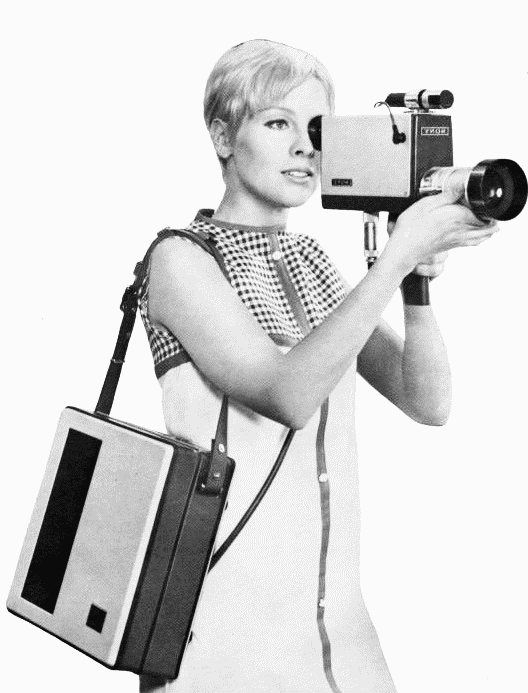 Sony Portapak
Sony Portapak
In the 1980s, Sony's Betacam format would set the pattern for a recorder integrated into the camera, much like the film cameras that preceded it.
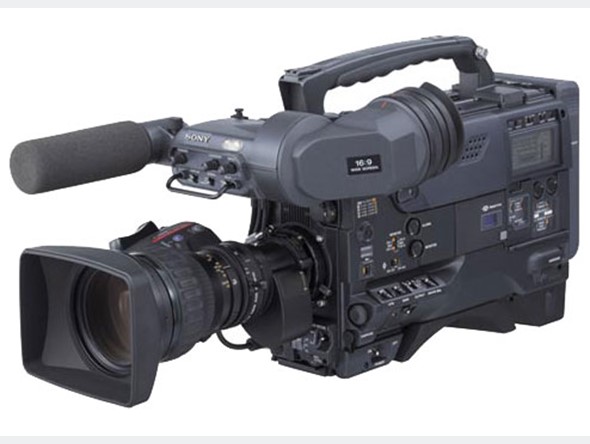 Sony Betacam BVW300
Sony Betacam BVW300
In many ways, the shoulder-mount form still makes sense: a moderately heavy camera balanced on the shoulder and steadied with the grip in the right hand away from the body provides stability, although many designs still assume camera operators are right-handed and right-eyed.
The Hand-Held Camera
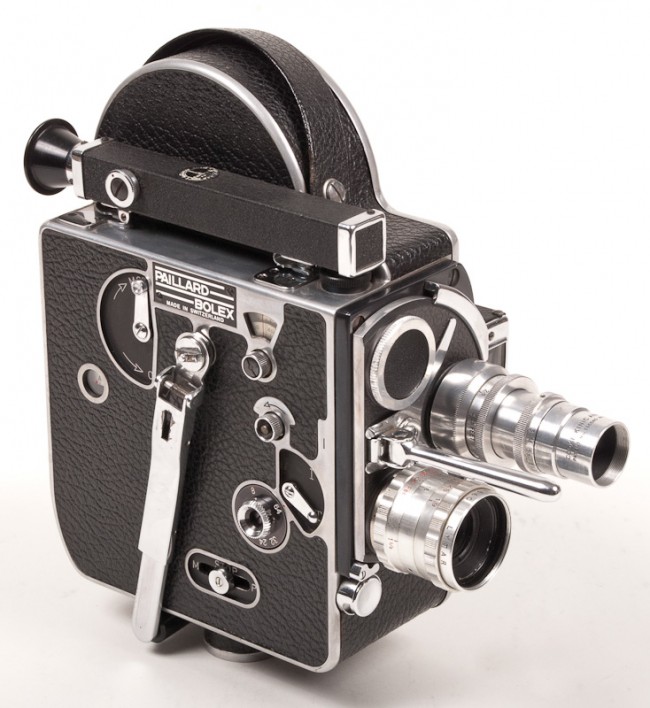 Bolex H16
Bolex H16
If we look to the 1960s' 16mm camera for origin of the shoulder mount design, hand-held cameras came rather earlier. The clockwork Bolex H16, developed in the 1930s, became the entry-level professional 16mm camera for the next three decades and even inspired an unlikely recent rebirth in the guise of the Digital Bolex. The form of the pistol-grip held H16 Reflex, with a viewfinder at the back of the camera rather than at the side, was followed by many consumer 16mm and 8mm cameras.
This became the form taken by the first portable consumer video cameras, often with a side hand grip replacing the pistol grip. Viewfinders were often positioned at the back of the camera in line with the lens, although, as viewfinders were now electronic, there was no need to follow this configuration.
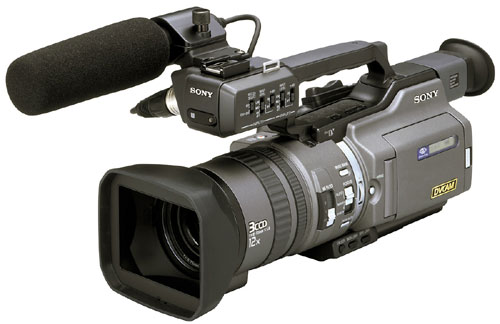 Sony PD150
Sony PD150
The handheld video camera was strictly an amateur format until DV emerged with cameras like the Sony VX1000 and the PD150, followed by the HDV format in Sony's Z series, which was increasingly used for commercial work. The DV formats and their slightly tweaked pro versions like DVCam and DVCPro were good enough to challenge the division between pro and consumer formats; although DV was never officially 'broadcast standard', a significant amount of it ended up on our screens.
Manufacturers like to segment the market so they can charge maximum prices to broadcasters, yet not lose customers with lower budgets who would accept slightly lower specs. We see today very similar cameras in shoulder-mount and hand-held forms, the latter designed for non-broadcast markets at lower prices. The consequence of this is that we have some excellent, high spec and very reasonably priced cameras in hand-held forms, even though that form is entirely inappropriate for cameras that can weigh around 3Kg or more.
The Stills Camera And Modular Design
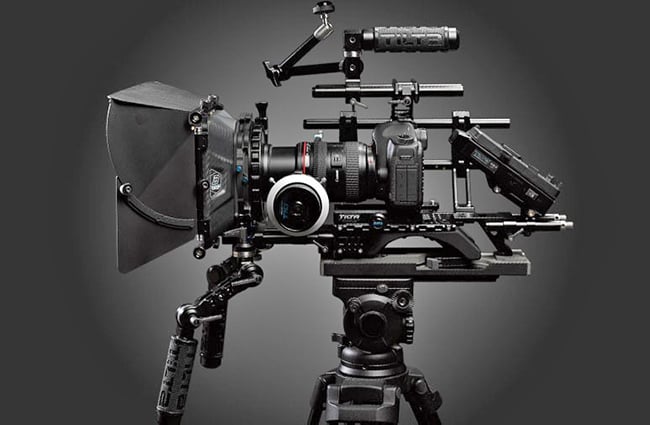 Canon DSLR, rigged up
Canon DSLR, rigged up
The spectacular rise of the DSLR for video use in the 21st century was a great example of a mass-produced consumer product exceeding the spec of a specialist and much more expensive professional product. Although digital stills cameras were never designed for shooting movies, cottage industries grew up enabling them to do just that – hence the development of the rig where shoulder mounts, monitors, follow focus and audio recorders could be bolted to the DSLR to construct effective (if unwieldy) video cameras.
This perhaps encouraged a certain mindset where cameras are perceived not as self-contained units, but modular blocks that can be put together with other modules. We see cameras today that, although designed solely for video use, make no sense unless some sort of rig is built around them. This also relates to the commodification of the elements that make up a camera; today, a small manufacturer can buy a chip, a lens mount and electronics off the shelf and build a camera around it without having to invest massively in specialised machinery.
Action Cameras, Gimbals And Drones
Some the biggest innovations in design have been in specialist cameras: GoPros that can be fitted on helmets or stuck to the inside roof of a car, drone technology that has given us gimbals, fixed remote cameras for TV 'reality' shows.
But there still remains a sense of the standard pro video camera, the 'proper', serious camera. Just what do we want it to be? Let us know your thoughts in the comments!
Tags: Production



Comments